Can I Sell Vegetables from My Garden in the UK? Your Simple Guide
Thinking about selling the vegetables you’ve grown in your garden? You’re not alone. Many garden enthusiasts in the UK wonder if they can turn their green-thumb hobby into a small business. Yes, you can sell vegetables from your garden in the UK, but there are a few important things you need to know.
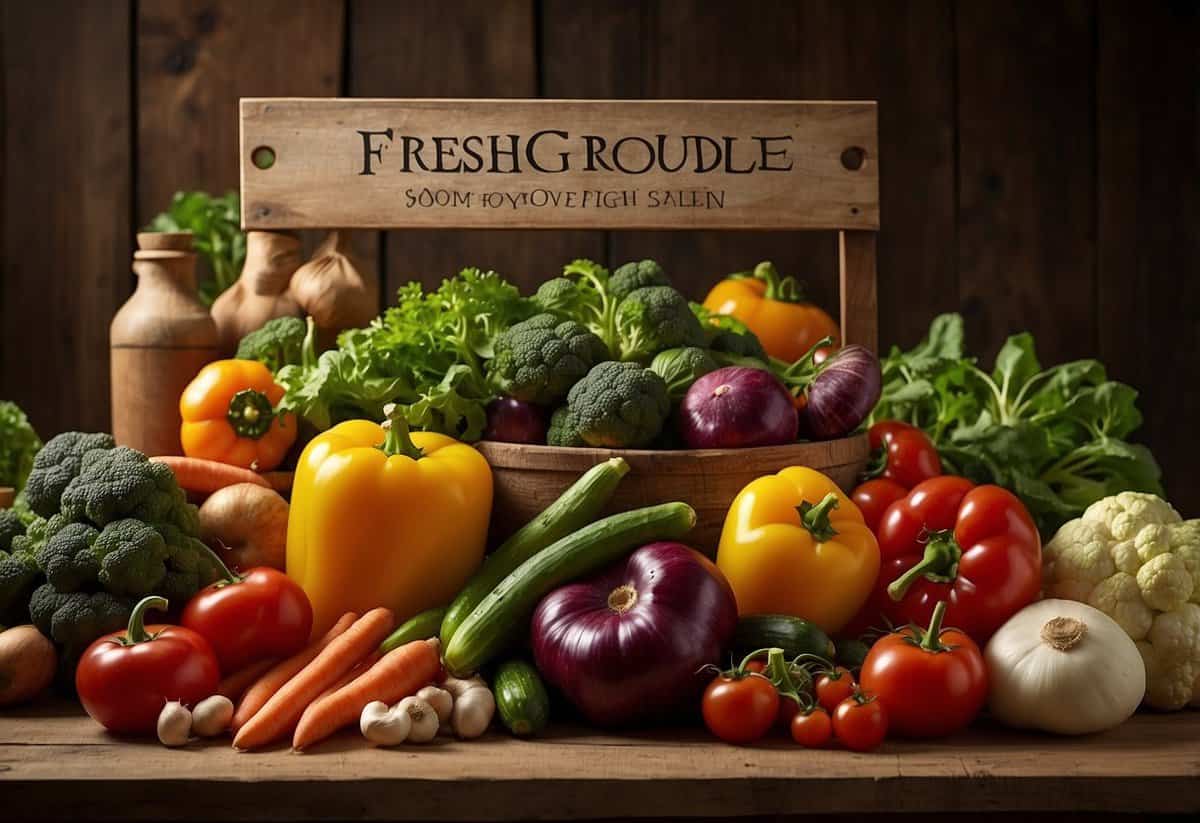
You’ll need to register as a food business with your local authority. This step ensures you meet the legal requirements for selling food products and helps keep your customers safe. Depending on where you live, setting up a stall outside your home may also require additional permissions.
To get started, think about the different ways you can sell your produce. Local farmers’ markets, car boot sales, and even direct deliveries in your community are great options. If you have a small amount of produce, car boot sales could be a convenient choice since you wouldn’t need a reservation. Venturing into making jams or chutneys from your vegetables can also expand your offerings and attract more customers.
Understanding the Legal Framework
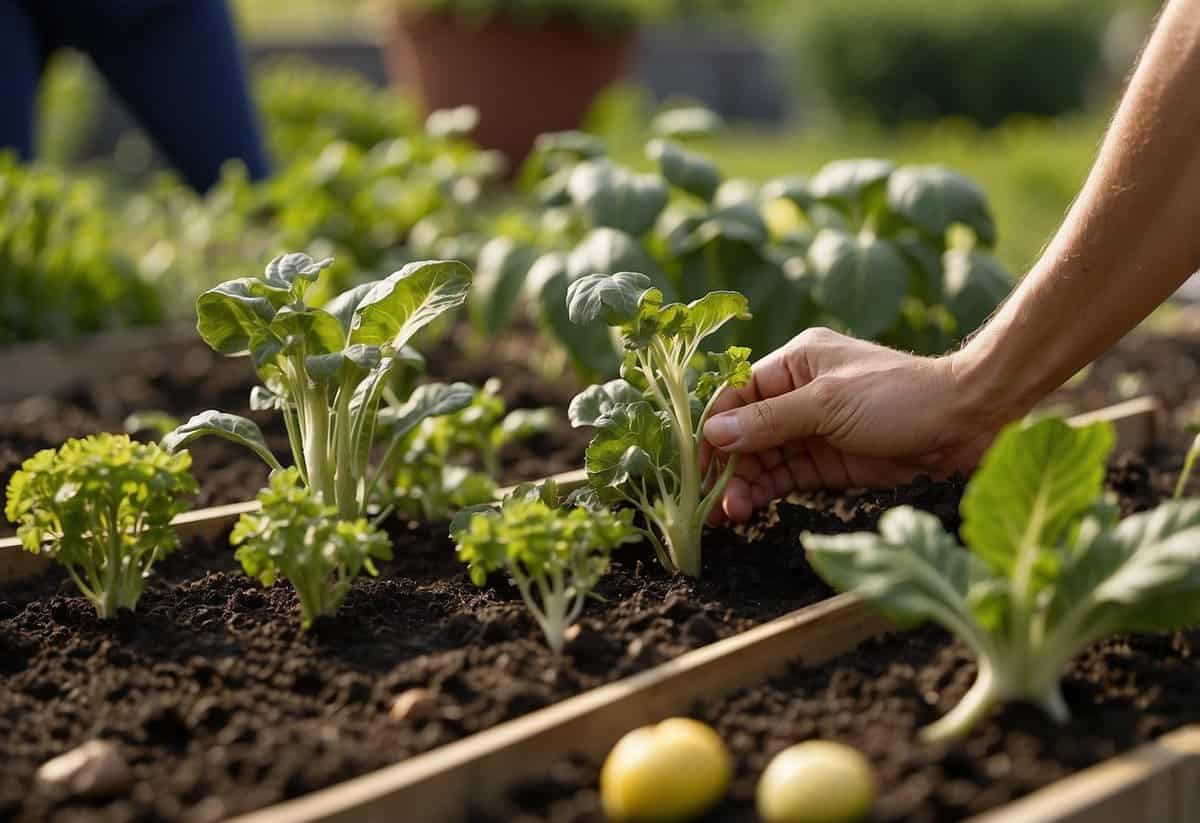
Selling vegetables from your garden in the UK involves understanding several legal aspects. You need to be aware of licenses and permits, tax implications, and planning permissions or zoning laws.
Licenses and Permits
In the UK, you do not need a specific license to sell homegrown vegetables, but regulations can vary by location. For example, putting a stall outside your house might be restricted in certain areas like London, where you may need to pay a fee to occupy public space.
It’s important to check with your local planning authority. Regulations differ, so it’s best to get clear information directly from them. While a general license isn’t needed, specific activities like selling prepared food from your produce (e.g., jams or chutneys) might require additional food safety licensing.
Tax Implications
When you sell vegetables, the income generated typically counts as taxable income. This means you need to report it on your tax returns. If you earn more than £1,000 from casual sales, you must register with HM Revenue and Customs (HMRC) and follow the necessary tax regulations.
Understanding thresholds and tax bands is crucial. For those running this as a small-scale venture, you might not owe a lot in taxes, but it’s essential to keep records of all sales and expenses. Accurate bookkeeping can help reduce the risk of penalties and ensure you only pay what is required.
Planning Permission and Zoning
If you plan to sell vegetables directly from your garden, you must also consider planning permission. Selling directly from your property could be subject to local zoning laws. Some places may not allow business activities in residential areas without special permits.
Contact your local planning authority for advice. They can provide details on whether your area is a permitted area for such activities. Additionally, if you build structures like stalls or signs, you might need planning permission for these as well.
By understanding and navigating these legal aspects, you can ensure your vegetable-selling venture remains both legal and profitable.
Preparing to Sell Your Produce
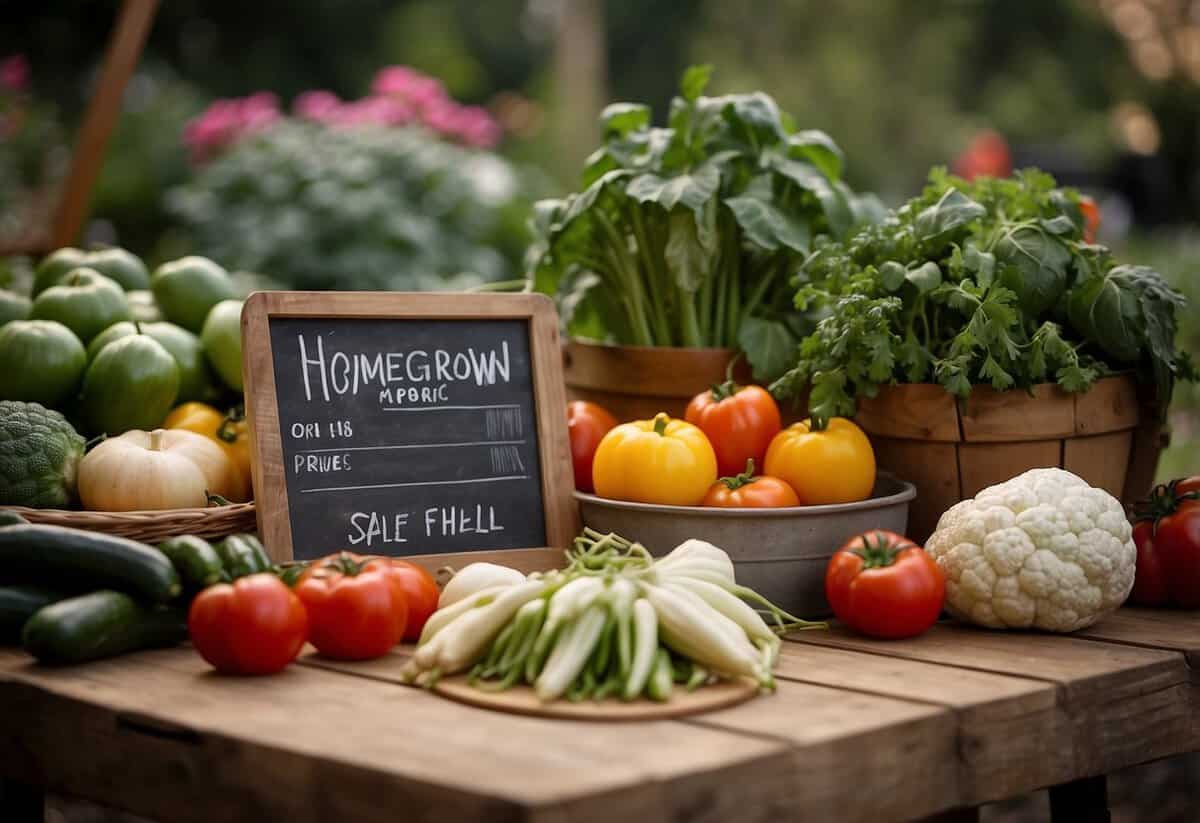
Before selling your garden produce, focus on gardening and crop care, efficient harvest and storage solutions, and setting up an appealing sales venue.
Gardening and Crop Care
Begin by selecting the best seeds and crop varieties suitable for your growing conditions. It’s important to use high-quality seeds and start them off in rich, well-draining soil. Consistent watering and regular weeding ensure healthy growth.
Proper plant spacing and sunlight exposure play a key role in producing high yields. Use compost or organic fertilizers to enrich the soil. Regular observation for pests and diseases and using organic pest control methods can save your crops.
Harvest and Storage Solutions
Harvest your vegetables at the right time to ensure peak freshness. For example, tomatoes should be firm and red, while lettuce should be crisp. Use clean, sharp tools to avoid damage and contamination.
Store your produce in a cool, dry place. Use breathable containers like wooden crates or baskets to allow air circulation. For some vegetables like carrots or potatoes, moisture-proof storage bags can help.
Label each container with the harvest date to maintain a first-in, first-out inventory system. This practice keeps the produce fresh and minimizes waste.
Setting Up Your Sales Venue
Choose a location for your sales venue that has high visibility and foot traffic. This could be a roadside stand, a stall at a farmers’ market, or even your front yard. Ensure you have necessary permits, especially if you’re setting up a stall in a public area.
Set up a sturdy table or stall with appealing displays. Use clear signage indicating the types of produce, prices, and your garden’s name. Engage passersby with colorful and organized displays. Consider adding some extras like recipes or growing tips to attract more customers.
Invest in a cash box and possibly a portable card reader for easy transactions. Offering delivery options can also attract more customers. Your friendly attitude and approachable setup will go a long way in building a loyal customer base.
Expanding Your Offerings
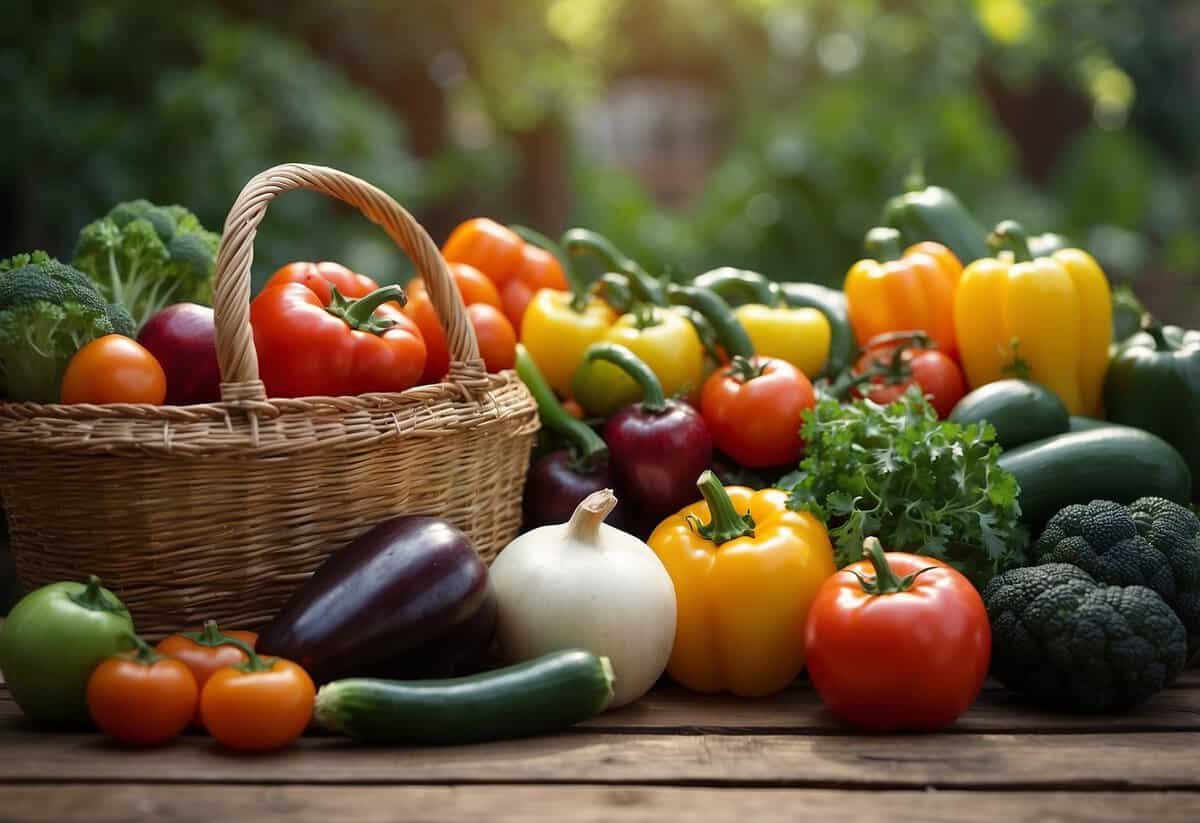
To grow your garden-based business, think about diversifying your produce and adding homemade products to attract more customers. Teaming up with local businesses can also help you reach new buyers.
Exploring Different Types of Produce
Consider growing a variety of fruits and vegetables to appeal to different tastes. Popular options include tomatoes, sweet potatoes, and carrots. Trying your hand at mushrooms or other unique items can set you apart from competitors. Offering organic produce can also attract health-conscious customers.
You can experiment with seasonal fruits and vegetables, adjusting your offerings based on what grows best during different times of the year. A diverse selection can help you maintain a steady stream of customers.
Adding Value with Homemade Products
Turning your fresh produce into homemade products can add value and boost your profits. Making jams from your fruits or pickling your vegetables like carrots can provide tasty options for your customers. These items often have a longer shelf life and can be sold at a higher price point.
Creating products like vegetable soups or organic snacks can also attract more buyers. Handmade items can serve as unique gifts or daily staples, appealing to a wider audience.
Collaborating with Local Businesses
Working with local businesses can expand your reach and introduce your produce to new customers. Restaurants may be interested in using your fresh, organic vegetables in their dishes. Farmers’ markets or local grocery stores can also provide platforms to sell your products.
Building relationships with these businesses can lead to regular orders, ensuring a consistent income. Collaborations can also include co-hosting events or offering bundled deals that feature both your products.
Compliance and Best Practices
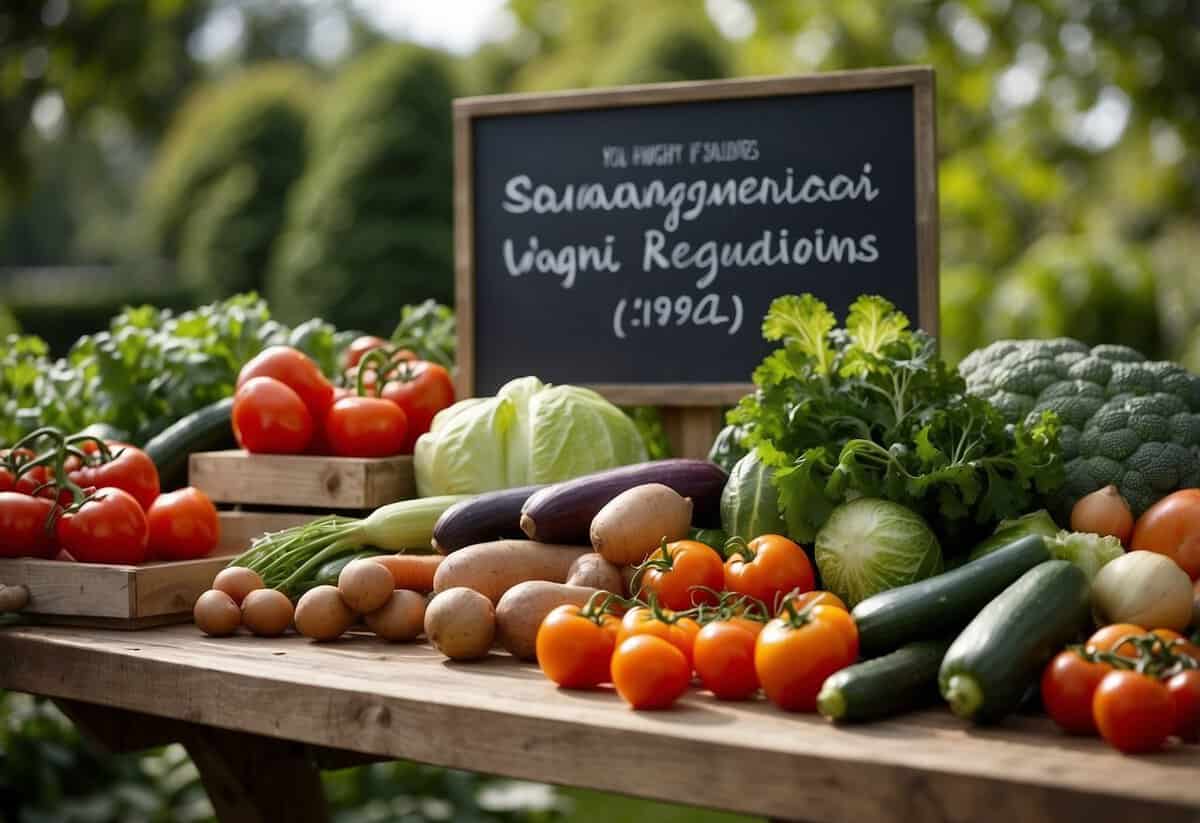
When selling vegetables from your garden in the UK, it’s important to adhere to food safety and health regulations. Additionally, considering the environmental impact of your gardening practices can enhance your produce’s appeal.
Food Safety and Health Regulations
You must register as a food business with your local authority if you plan to sell your garden vegetables. This step is mandatory to ensure that your produce meets the required standards. As part of this process, you’ll need to provide details about your garden and the types of vegetables you intend to sell.
It is crucial to follow hygiene practices to maintain food safety. Clean tools and containers are essential to prevent contamination. Regular handwashing and using clean water for irrigation can also help keep your vegetables safe for consumption.
You should also comply with labelling requirements, which include the name and address of your food business, a list of ingredients, and use-by dates. This information is vital for consumers to make informed choices about the food they purchase.
Guidelines on adhering to food safety and health regulations are available to help you navigate these requirements.
Environmental Considerations
Your gardening practices should respect the environment to ensure sustainability. Using organic methods can reduce your environmental footprint and appeal to eco-conscious consumers. Avoid harsh chemicals and opt for natural fertilizers and pest control methods.
Managing your agricultural land responsibly by rotating crops and using compost can improve soil health. This practice not only supports a sustainable growing environment but also boosts the quality of your produce.
Consider the impact of transportation if you offer home deliveries. Reducing fuel usage and packaging waste can further minimize your environmental impact. Offering local deliveries by bicycle or electric vehicles can be an eco-friendly way to reach your customers.
By following these environmental considerations, you contribute to a healthier planet while producing high-quality vegetables.







